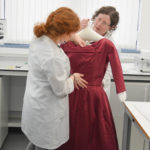
By Becky Doonan, 2nd year student.
During the second semester of the final year, students are each given an object to treat and analyse fully, as a final practical project. My project was a 1950’s Dior dress from Manchester Art Gallery (MCAG) and the cost of conservation was met by a MCAG grant from Collecting Cultures (HLF). It comprises both an outer dress and a complex boned corset under-structure made of black cotton net, with extensive petticoats. The silk satin was in an extremely fragile condition at the neckline, shoulders, underarms, and particularly around the top edge of the corseted, fully boned under-structure. As MCAG wanted to be able to hang the dress for storage with the rest of their costume collection and possibly mount it on a mannequin for future display, my task was to stabilise vulnerable areas so that the dress was strong enough to be hung from a padded hanger and handled during mounting without risking further damage. I undertook FTIR analysis of the silk satin with the help of Dr Margaret Smith, Scientific Researcher, Lecturer at the CTC, and results suggested traces of antiperspirant on the fibres, which could go some way to explaining the surprisingly poor condition of such a relatively young textile.
But what has this got to do with armadillos? Whilst the majority of the damaged areas of silk could be carefully stabilised with inserted colour matched silk patches and laid couching in single ply hair silk, the top edge of the corset presented more of a challenge. This dress had been a sample dress, originally used in store as a model of the style, but not finished internally to the high standards one would expect of a couture garment. This meant that the channels holding the spiral steel boning in place were not properly finished inside the top edge binding, and the hard steel ends were breaking their way through the fragile silk. Something was needed that was tough enough to cap these ends and prevent them causing further points of stress, whilst also being flexible enough to move naturally with the fabric of the dress and conform to the ever changing curve of the corset neckline.
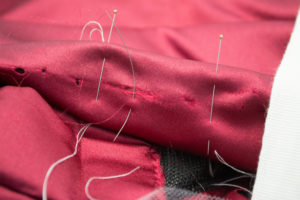
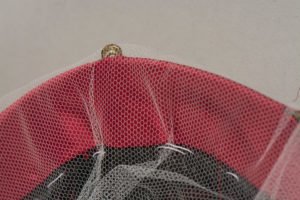

I took inspiration from armadillos and the way that their overlapping plates allow them to curl and uncurl. Using stiff Nomex® card, an inert conservation grade aramid polymer sheet material sometimes used in upholstery conservation[1] and mount making[2], I created my own simple articulated armadillo forms that could then be inserted into the top edge of the corset, containing the boning and isolating it from the fragile silk. A long cotton patch was used to create an additional sleeve around the boning along the length of the corset neckline, to further distribute any strain from the boning. The original silk binding was then re-stitched closed.


The treatment was concluded by creating a custom made padded hanger and Fosshape® body form for the dress to hang on. Fosshape® is a non-woven polyester felt-like material that shrinks when heated or steamed, and can be used to create a wide variety of hollow forms for costume mounting[3]. Creating a body form for inside the dress meant that the full weight of the dress was not concentrated at the shoulders, but was more naturally distributed at the waist and hips.
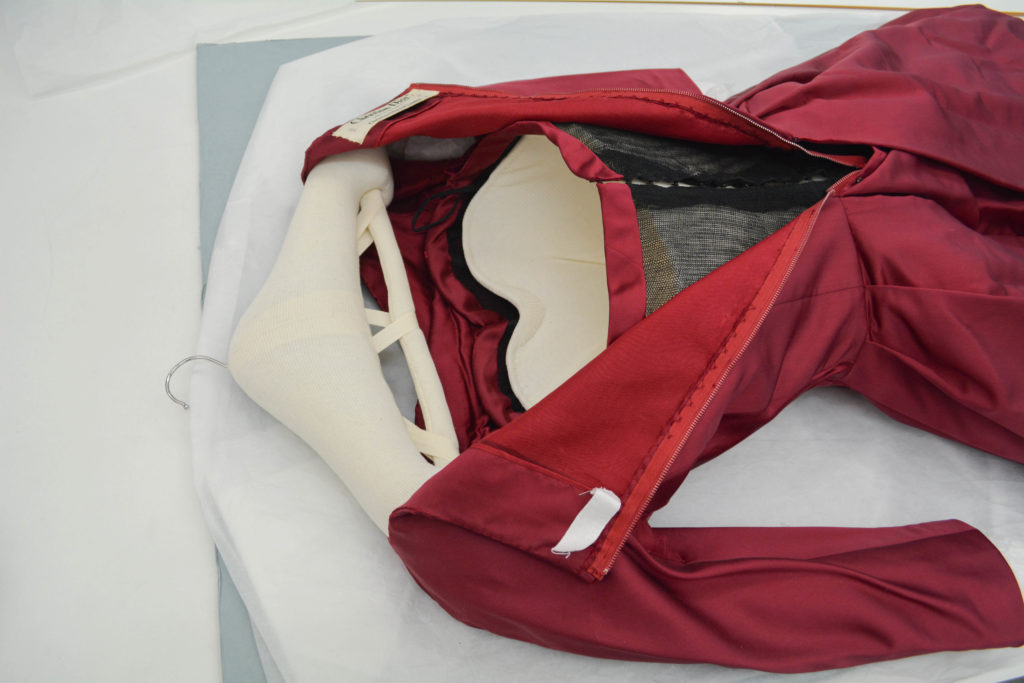
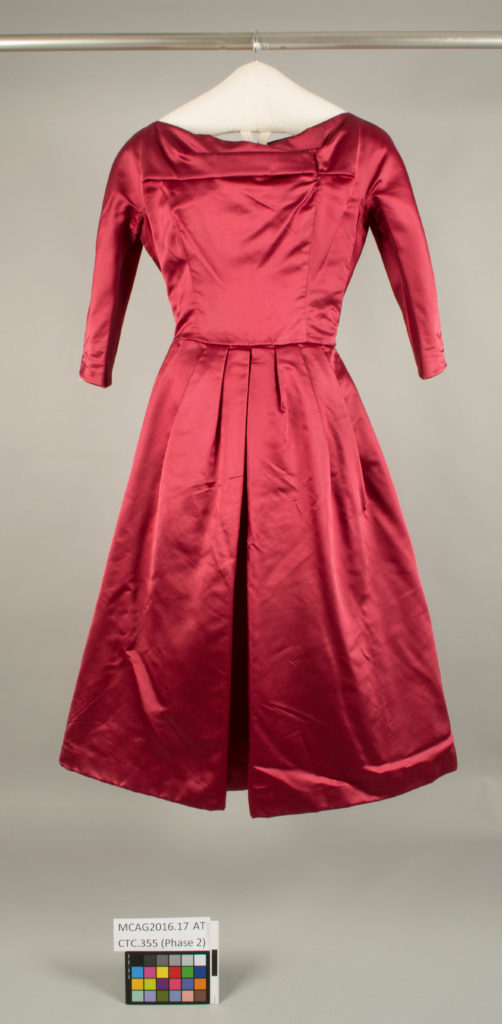
Overall, this project has been a very interesting case of treating a very incompatible combination of materials. The need to isolate them from each other in a sufficiently secure way, whilst still accommodating the movement of the textile itself was challenging, and it has been a great foray into the complexities of costume conservation.
[1] LAHIKAINEN, E. 2001. Ethafoam® treatments for two eighteenth-century French chairs. In K. GILL AND D. EASTOP eds. Upholstery Conservation Principles and Practice, Butterworth Heinemann, Oxford, 90-99. https://books.google.co.uk/books?id=J9MrBgAAQBAJ&pg=PA95&lpg=PA95&dq=nomex+conservation+sheet&source=bl&ots=7BoAxhTPLq&sig=VfExm1THnY_bixLN7gfGnarTRO0&hl=en&sa=X&ved=0ahUKEwjTm4_vjrPcAhWlKsAKHUbrDRsQ6AEIXjAK#v=onepage&q=nomex%20conservation%20sheet&f=false.
[2] See, for example, https://lubasconservation.files.wordpress.com/2012/02/jaic_v51_no1_08_nurse_77-84.pdf
[3] ‘Fosshape,’ http://www.conservation-wiki.com/wiki/Fosshape


Armadillo plates was a brilliant idea, hope it gets passed around
[…] Read Becky’s blog post here: Taking inspiration from armadillos: articulated forms as a way of creating rigidity with movement […]